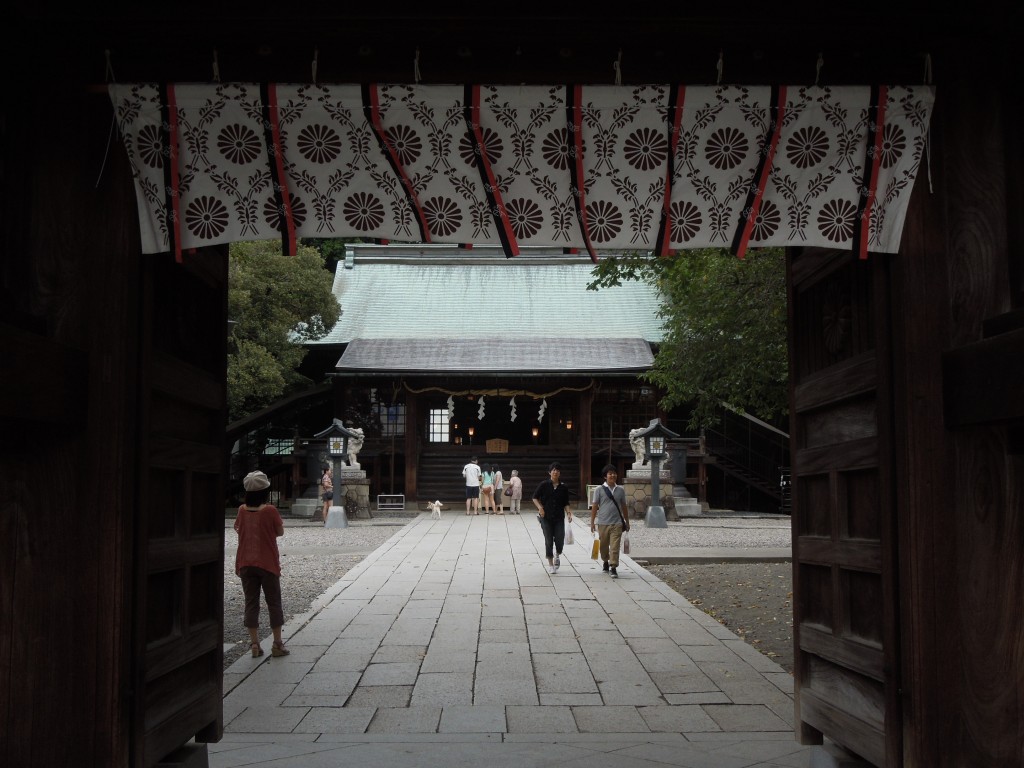
Entrance to Futarayama Shrine
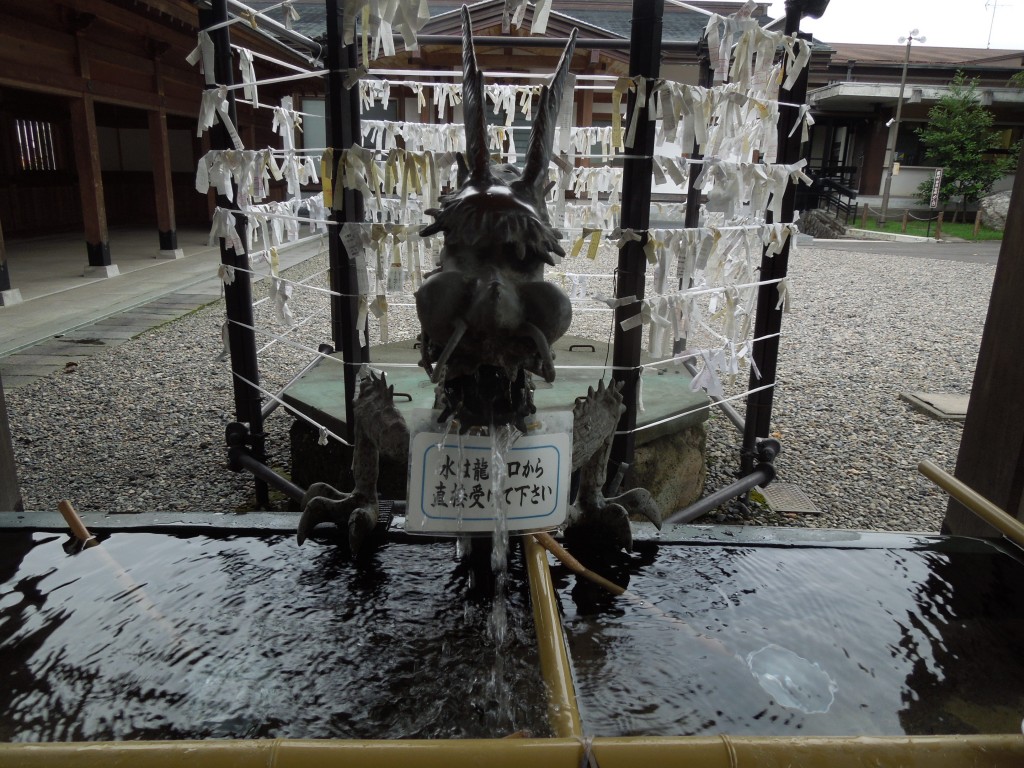
Water basin and fortune slips - two staples of the Shinto shrine
Perhaps the first thing to say about Futaryama Shrine is that it’s not related to its more famous neighbour Futarasan Shrine in nearby Nikko. One is written 二荒山; the other is written 二荒山. Spot the difference?
My immediate thought was that there must be some odd connection between them. ‘There are some theories about that,’ the miko told me. ‘But the shrines are quite separate. Futarayama is called Two Hills because there were two hills here.’ One might presume Futarasan was named for just the same reason, though in his book Shinto Shrines Joseph Cali speculates that the name derives from Fudarakusan, Japanese for the earthly paradise of the thousand-armed Kannon.
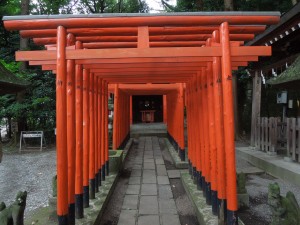
Shrine within a shrine: torii tunnel for the Inari subshrine
The shrine is associated with Prince Toyokiiri, a son of the legendary Emperor Sujin (possibly third or fourth century). He was ordered by his father to the region to pacify the Ezo tribe (presumably Ainu), so like several other ancestral shrines in the Tohoku area, it owes its existence to the imperialising tendencies of the Yamato tribe.
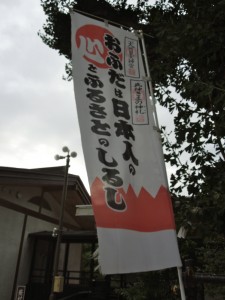
Banner proclaiming the virtues of the ofuda - for Japanese
After the initial foundation, worship of Prince Toyokiiri was relocated to the present site in 828, and a commemorative ceremony is held every year in December and January.
The shrine has a number of treasures, including an iron-cast Komainu guardian dog. The present buildings only date from 1877, after the shrine burnt down for the fourth time in its history. Nonetheless the grounds have a patina of age, though it’s by no means a must-see shrine – unless, like me, you happen to be stuck in Utsunomiya on the way to the World Heritage Site at Nikko…
One disconcerting thing from an internationalist perspective was a banner proudly proclaiming the virtues of the ‘ofuda‘ or talisman – for Japanese. ‘The ofuda is the heart and soul of a Japanese, and the mark of one’s hometown,’ it said. Despite being the ‘gateway to the World Heritage of Nikko’, Utsunomiya it seems prefers to keep a decidedly insular view of the transcendental.
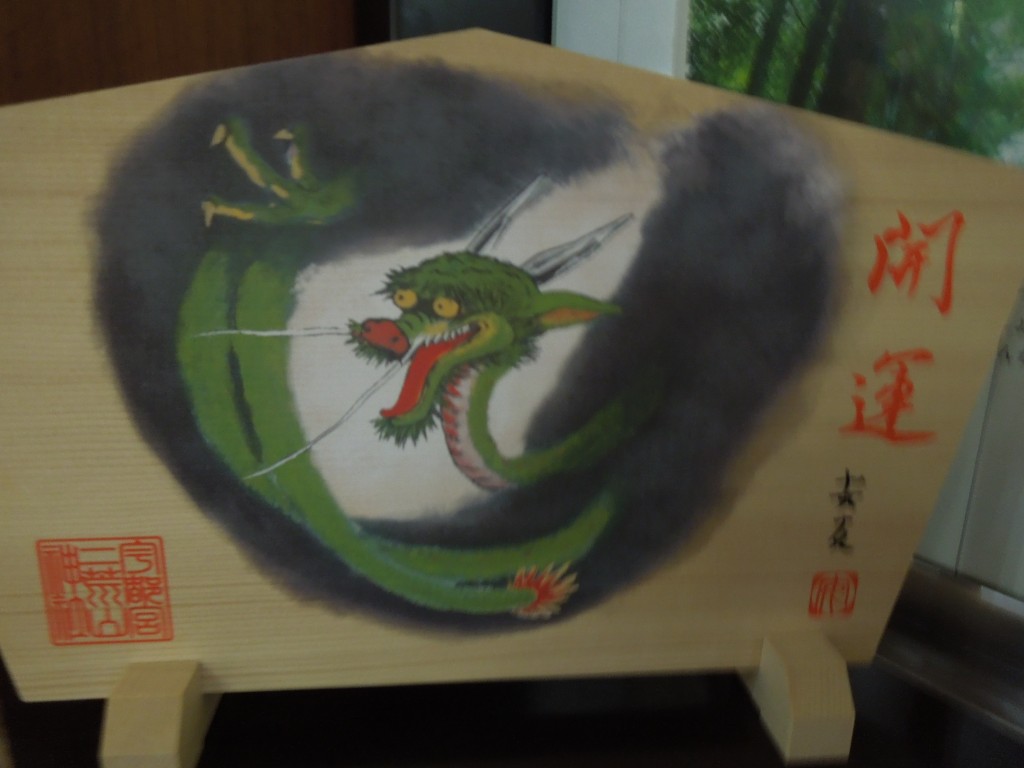
The shrine's ema bears a dragon, symbol for Japanese and non-Japanese alike

Leave a Reply